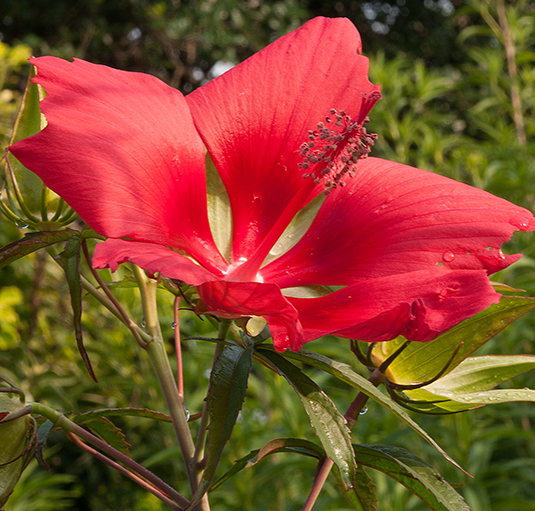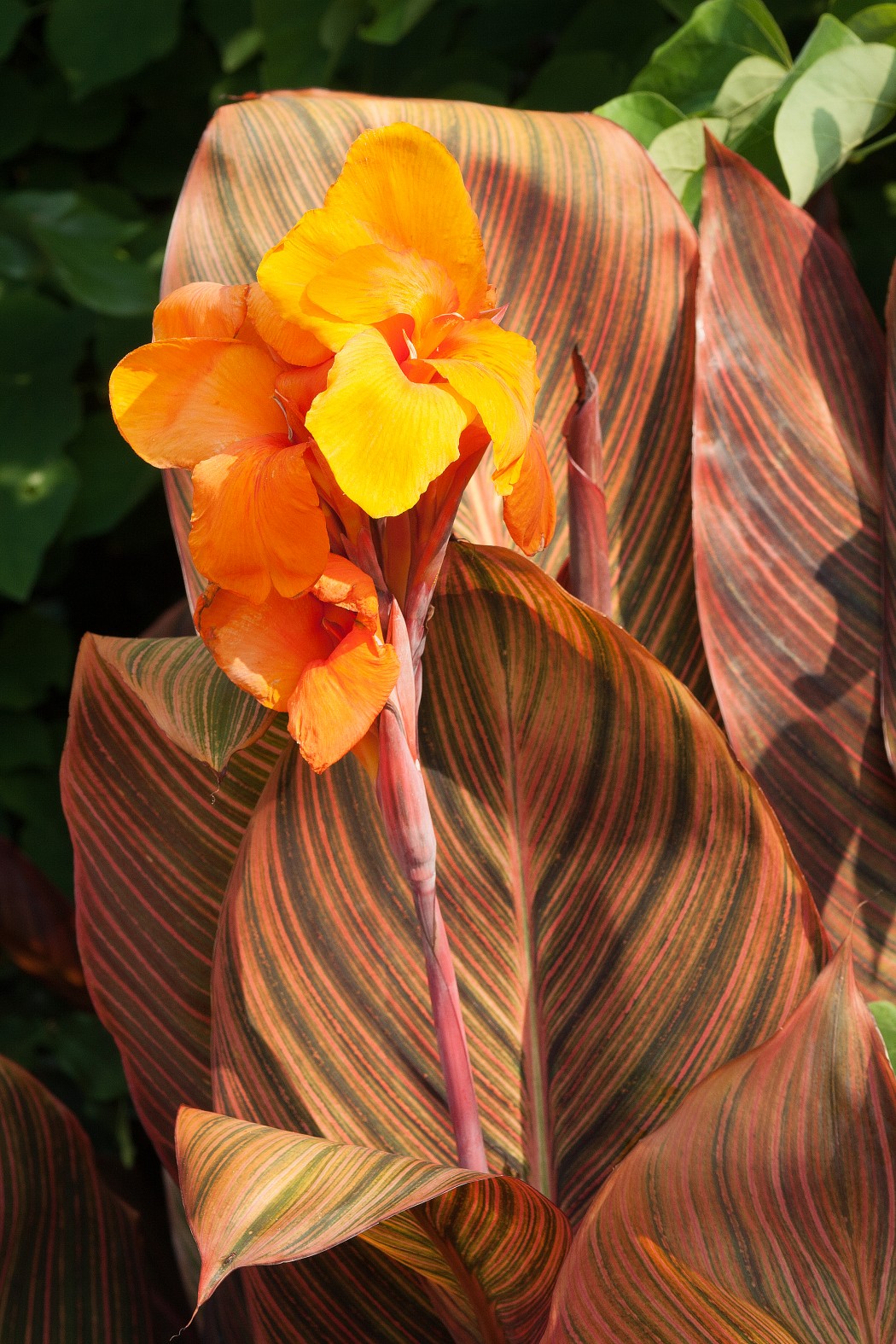Wondering how to make an earth-friendly rain garden attractive? Scratching your head over what to do with a low, soggy area in your yard?
There are several pretty native perennials that can be part of the solution. These tough beauties thrive in the wettest parts of this region and can turn a mire into mass displays of cheerful blooms.
Need examples? Here are five of my favorites, plus a July to-do list for your garden:
Cardinal Flower (Lobelia cardinalis). A hummingbird favorite, it has 2- to 3-foot-tall bloom spikes that flaunt one of the prettiest reds on the planet. Although it can take full sun, cardinal flower puts on a better flower show with at least some shade in the afternoon. In favorable moist soil, it will slowly spread by way of basal offshoots and seeds.
Ironweed (Vernonia sp.). This tall, open, gangly perennial waits until late summer to parade clusters of small, vivid purple blooms, which are held high on skinny, 6- to 9-foot-tall stems. As another plus for the flowers, also factor in kinetic color — these botanical bits of amethyst are butterfly magnets.
Swamp Sunflower (Helianthus angustifolius). This is the showoff that turns roadside ditches golden late in the growing season. Another butterfly favorite, it can grow to 6 feet tall and produces better flower displays in a full sun setting. A happy swamp sunflower can be a bit of a bully in the garden, as it can rapidly spread by rhizomes, so give it plenty of room.

Texas Star can be a bright, bold addition to any boggy landscape.
Texas Star (Hibiscus coccineus). Also known as “swamp hibiscus,” it is a tall (6 to 8 feet) beauty sporting brilliant red blooms as large as 8 inches across. Its long, narrow, palmate leaves also add a tropical appeal. Full sun, plenty of water and occasional supplemental feedings of fertilizer will keep this plant in flower through the growing season.
Canna (Canna sp.). This bold plant is actually native to the Southeast, South America, and all points in between. Stretching from 3 to 8 feet tall, depending on the cultivar, cannas sport sassy flowers in hot hues of pink, red, orange or yellow. Its broad leaves can be attention-getters, too, ranging from dusky deep burgundy tones to screaming green, salmon and yellow stripes.
July To-Do in the Garden
• Free plants! Now is a great time to take semi-hard cuttings of such ornamentals as acuba, azalea, buddleia, clematis, nandina, gardenia, holly, kerria, camellia, viburnum and weigela.
• Herbs should begin to mature this month, and the best time to harvest them for peak flavor or scent is early in the morning before the sun’s rays strengthen.
• Keep the spent blossoms on re-blooming roses pruned off to prevent energy going into hip production at the expense of future flowers.
• It is not too late for warm-season lawn renovation. Bermudagrass, centipede, St. Augustine and zoysia can still be planted this month.
Want to Ask L.A. a question about your garden? Contact him at lajackson1@gmail.com.







